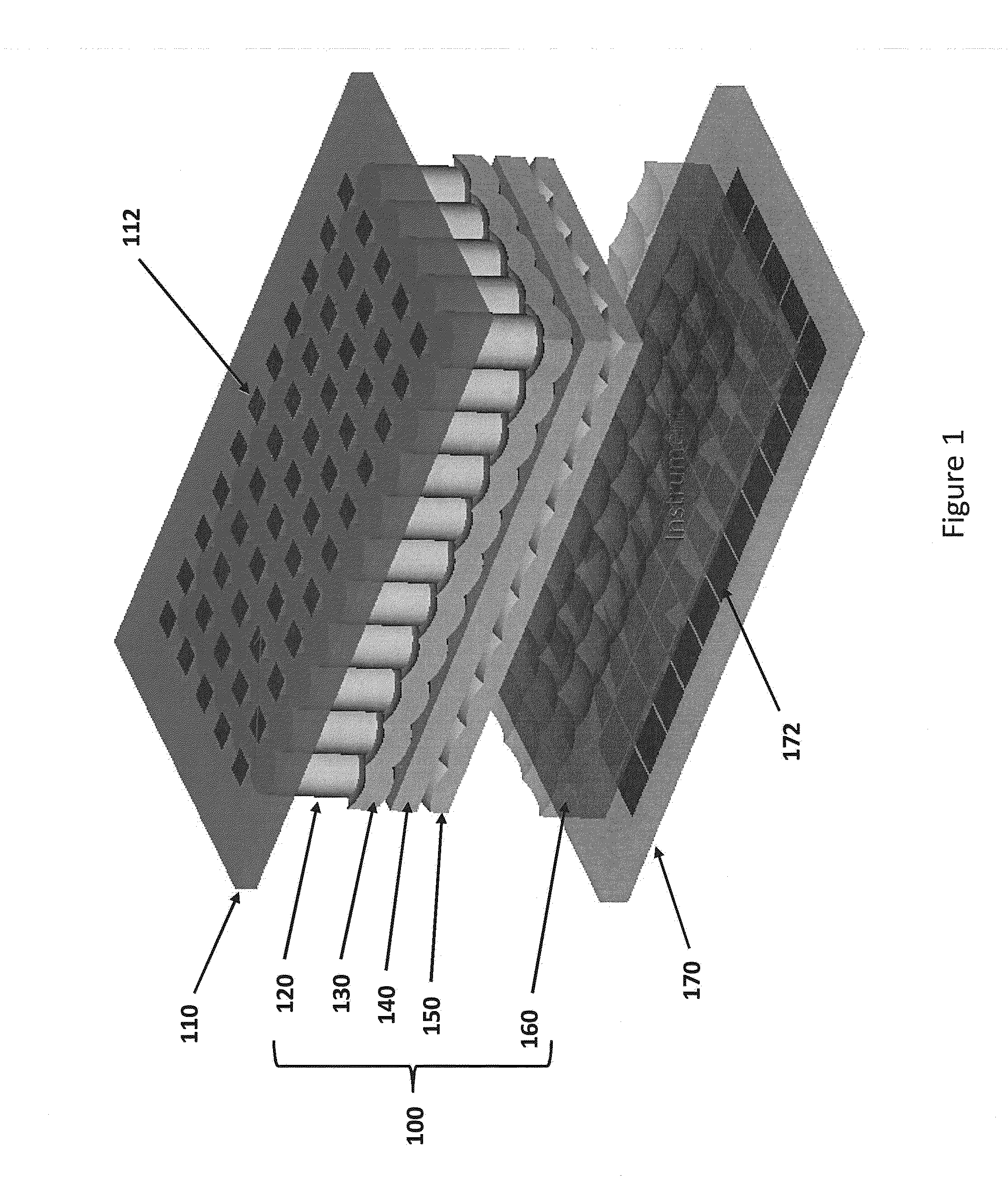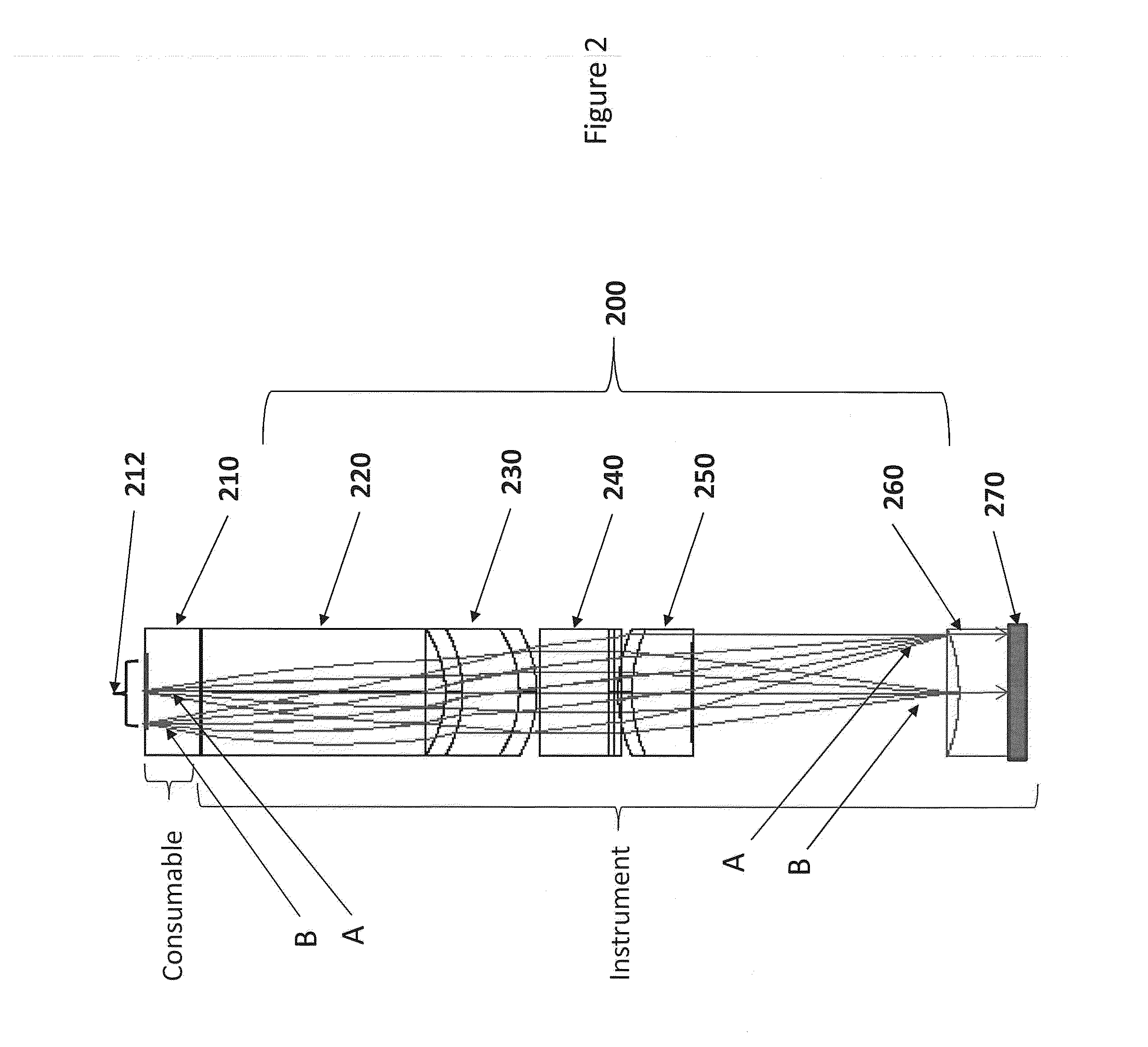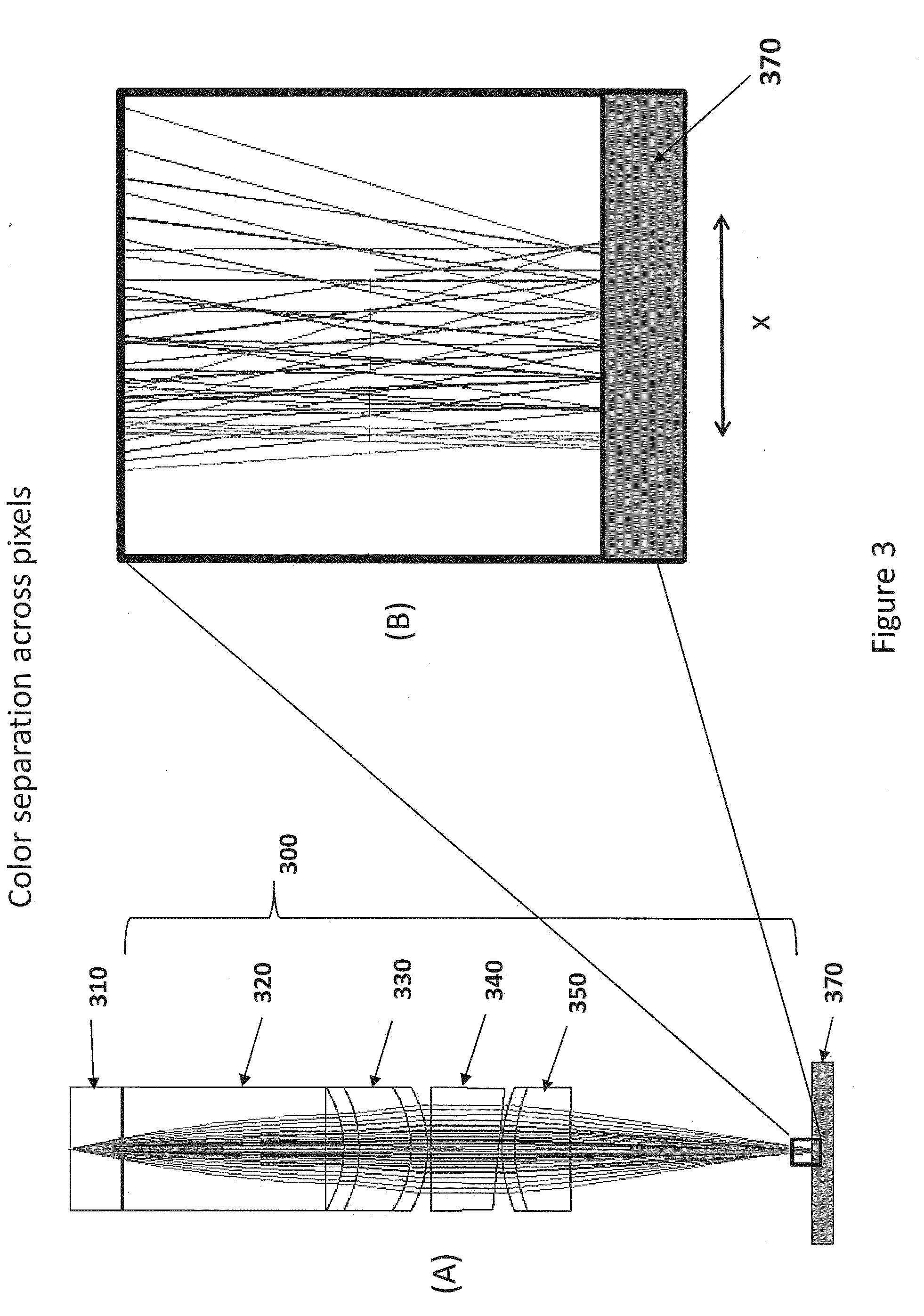Analytical devices having compact lens train arrays
a technology of lens train array and compact structure, applied in the field of analytical systems, can solve the problems of increasing multiplex, inability to tolerate variations among different analyses in a given system, and increased difficulty in multiplex
- Summary
- Abstract
- Description
- Claims
- Application Information
AI Technical Summary
Benefits of technology
Problems solved by technology
Method used
Image
Examples
examples
CLT Arrays from Molded Plastic Optics
[0179]FIG. 12 shows three different embodiments of CLT arrays that are designed for use with three different detectors from various commercially available sensors. The ZMW chip and camera sensors are not shown. FIG. 12(A) utilizes sensor BAE 2521 from Fairchild, with an array of 7 by 8 CLTs with lateral dimensions of 14 mm by 16 mm. FIG. 12(B) uses a pair of BAE 2020 sensors from Fairchild butted side with an array of 7 by 13 CLTs with lateral dimensions of 14 mm by 26 mm. FIG. 12(C) uses the a Dynamax 0174 sensor with an array of 9 by 12 CLTs with lateral dimensions of 18 mm by 24 mm There is no direct matching of pixels to nanoscale region. Typically, about 3 spatial and about 4 spectral pixels for a total of 12 pixels are used per nanoscale region or ZMW. A BAE 2521 provides a multiplex of about 450 k ZMWs. Each lens train is 2×2 mm square. Larger sensors such as one constructed by butting two BAE 2020 sensors side by side provide about 700 k ...
PUM
| Property | Measurement | Unit |
|---|---|---|
| Distance | aaaaa | aaaaa |
| Color | aaaaa | aaaaa |
| Area | aaaaa | aaaaa |
Abstract
Description
Claims
Application Information
 Login to View More
Login to View More - R&D
- Intellectual Property
- Life Sciences
- Materials
- Tech Scout
- Unparalleled Data Quality
- Higher Quality Content
- 60% Fewer Hallucinations
Browse by: Latest US Patents, China's latest patents, Technical Efficacy Thesaurus, Application Domain, Technology Topic, Popular Technical Reports.
© 2025 PatSnap. All rights reserved.Legal|Privacy policy|Modern Slavery Act Transparency Statement|Sitemap|About US| Contact US: help@patsnap.com



